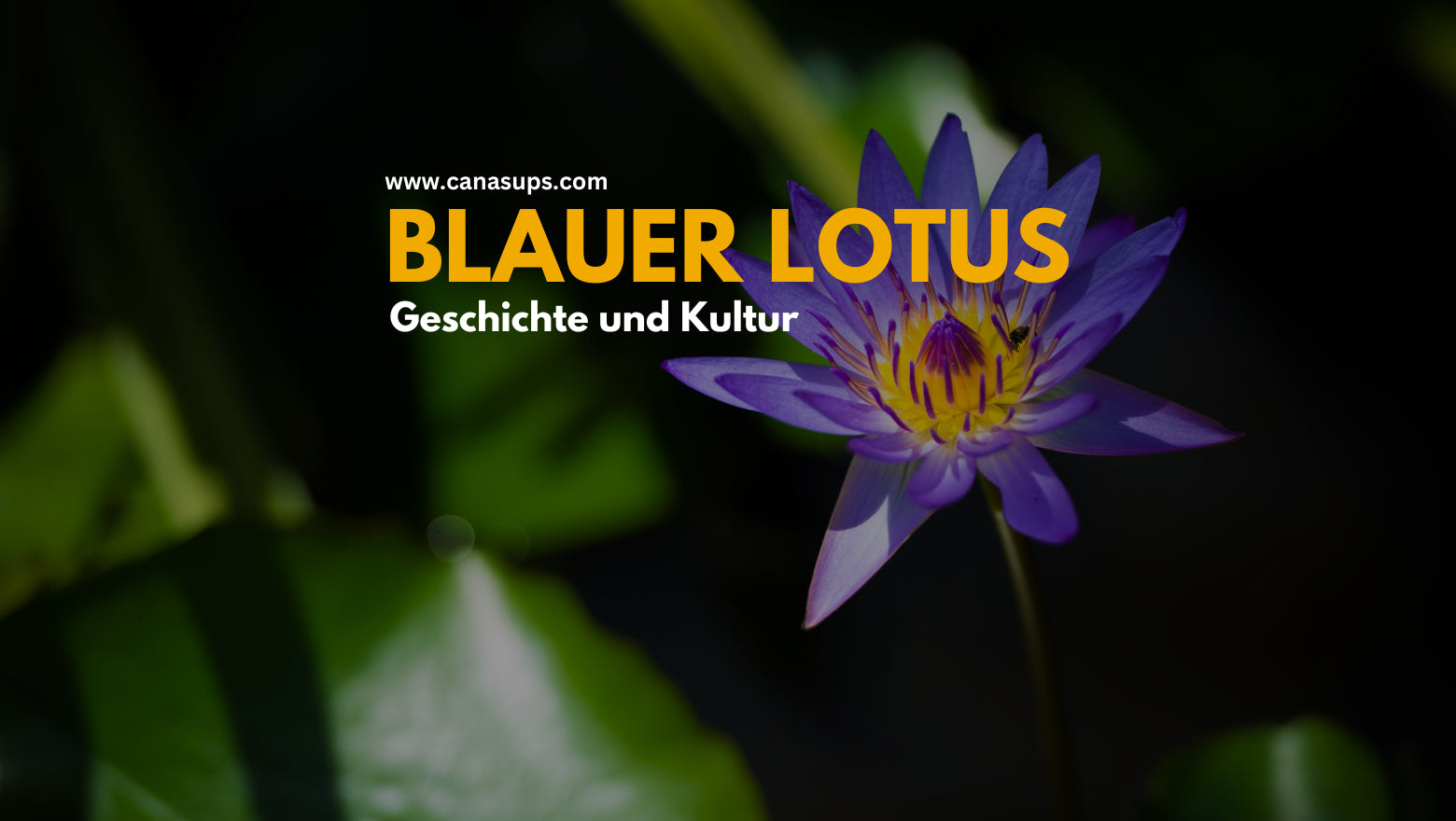The aquatic plant Nymphaea caerulea, also known as the blue lotus, possesses a rich history and cultural relevance. This plant, originally from Egypt and parts of East Africa, symbolizes beauty, purity, and spiritual enlightenment. In Egyptian mythology, it is closely associated with the sun god and frequently appears in artistic and architectural depictions. Even in ancient Egypt, Cleopatra is said to have utilized its aphrodisiac properties.
Table of contents: |
What is Blue Lotus?
The blue lotus, also known as Nymphaea caerulea, is an aquatic plant of captivating beauty and rich historical significance. Originally native to the waters of the Nile Valley, this plant has evolved into a symbol of purity and spiritual enlightenment in various cultures.
Historical origin and distribution:
The blue lotus, botanically known as Nymphaea caerulea, originated in the nutrient-rich waters of the Nile River in Egypt and spread from there to various parts of East Africa. Thriving in the shallow, sun-drenched waters, this plant soon became a central element in Egyptian culture and religion. Its spread beyond Egypt's borders to other parts of the ancient world, including the Middle East and India, testifies to its profound impact and value in various civilizations. Traders and travelers brought the lotus along their routes, allowing it to gain a foothold in local cultural and spiritual practices.
Cultural and mythological significance:
The Blue Lotus holds a central role in Egyptian mythology. It is often depicted as the bed of the nightly rebirth of the sun god Ra. Each morning, the lotus bloomed with the rising sun, symbolizing the sun god's daily rebirth. This association with the sun gave the lotus sacred significance in Egyptian culture, with it being revered as a symbol of creation, rebirth, and eternal life. In Egyptian art, the Blue Lotus is often depicted alongside deities such as Nefertem, who was considered a god of healing and beauty and was closely associated with the fragrance and healing power of the lotus. This deep symbolic value of the lotus is reflected in many aspects of Egyptian life, from temple ceremonies to everyday objects, demonstrating how the plant permeated the spiritual and worldly lives of the ancient Egyptians.
Symbolic interpretations:
The blue lotus is a symbol with complex meanings. In Egyptian culture, it symbolized not only beauty and purity, but also spiritual enlightenment and the connection between the physical and the metaphysical. Its daily opening and closing was interpreted as a symbol of the eternal cycle of death and rebirth. In spiritual traditions, the lotus symbolizes the opening of the third eye and the associated enlightenment. These diverse meanings make the blue lotus a complex and fascinating symbol in various cultural and religious traditions.
Cleopatra's orgies:
Cleopatra, one of the most fascinating figures of ancient Egypt, is known for her seductive beauty and skillful political maneuvering. The Blue Lotus, a symbol of beauty, sensuality, and rebirth in Egyptian culture, was famed for its captivating scent and attractive appearance. These qualities made it an ideal symbol of seduction and passion, elements closely associated with the depiction of Cleopatra. Furthermore, it is claimed that Cleopatra may have used the Blue Lotus in ritual ceremonies associated with fertility and seduction. These rituals may have used the Blue Lotus as a means of enhancing the erotic atmosphere, symbolizing Cleopatra's divinity and her connection to fertility and femininity.
Artistic representations:

The blue lotus was extensively depicted in Egyptian art and architecture. It was often depicted in frescoes, reliefs, and paintings and symbolized the divine and purity. These depictions not only emphasize the beauty of the plant but also its cultural and spiritual significance. In modern art, the lotus remains a popular motif, symbolizing peace and purity.
Current research and studies:
Recently, the blue lotus has attracted scientific interest. Research shows that the lotus potentially possesses antioxidant, anti-inflammatory, and calming properties. These modern studies could confirm and expand on traditional uses of the lotus, leading to a better understanding of its role in natural medicine.











